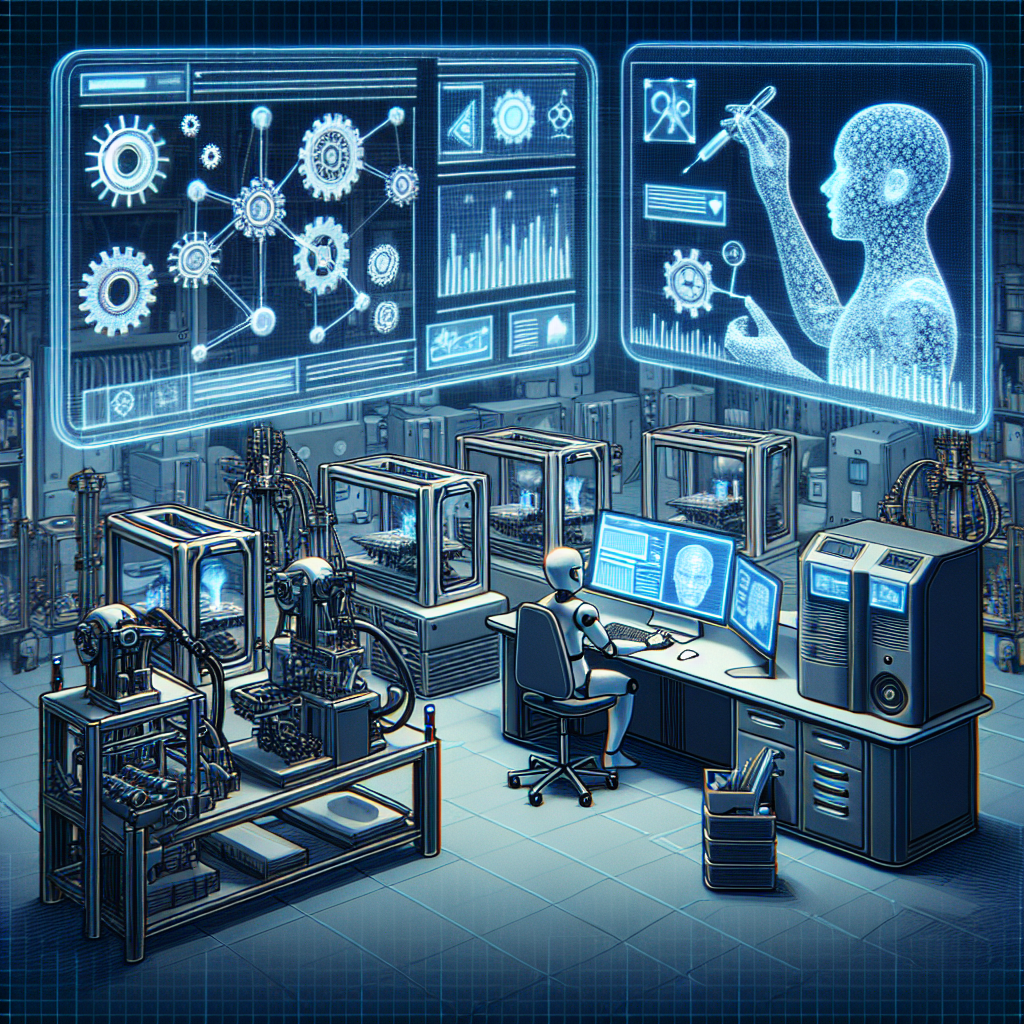The Role of AI in 3D Printing and Additive Manufacturing
Artificial Intelligence (AI) has been making significant strides in various industries, and 3D printing and additive manufacturing are no exception. AI is revolutionizing the way products are designed, manufactured, and optimized, leading to improved efficiency, cost savings, and innovation in the industry. In this article, we will explore the role of AI in 3D printing and additive manufacturing and how it is shaping the future of manufacturing.
AI in 3D Printing
3D printing, also known as additive manufacturing, involves the process of creating three-dimensional objects by layering materials on top of each other. This technology has been used in various industries, including aerospace, automotive, healthcare, and consumer goods. AI is playing a crucial role in enhancing the capabilities of 3D printing by optimizing designs, materials, and processes.
One of the key areas where AI is making a significant impact in 3D printing is in design optimization. Traditional design processes often rely on human intuition and experience to create complex structures. However, AI algorithms can analyze vast amounts of data and generate innovative designs that are optimized for performance, cost, and manufacturability. This allows engineers to explore new design possibilities that were previously unattainable with conventional methods.
AI is also being used to improve the quality of 3D printed parts. By analyzing sensor data and feedback from the printing process, AI algorithms can detect defects and anomalies in real-time, allowing for immediate corrective actions to be taken. This ensures that the final products meet the desired specifications and quality standards, reducing the need for post-processing and rework.
Furthermore, AI is enabling predictive maintenance in 3D printing systems. By monitoring the performance of printers and analyzing historical data, AI algorithms can predict when components are likely to fail and schedule maintenance proactively. This helps to minimize downtime and prevent costly breakdowns, ensuring smooth and continuous operation of 3D printing processes.
AI in Additive Manufacturing
Additive manufacturing encompasses a broader range of technologies beyond 3D printing, including processes such as laser sintering, electron beam melting, and binder jetting. AI is being applied across these different additive manufacturing methods to optimize processes, improve material properties, and enhance productivity.
One of the key benefits of AI in additive manufacturing is the ability to optimize process parameters. By analyzing data from sensors, cameras, and other sources, AI algorithms can optimize the temperature, speed, and other parameters of the manufacturing process to achieve the desired results. This leads to improved efficiency, reduced energy consumption, and higher quality parts.
AI is also being used to develop new materials for additive manufacturing. By analyzing the properties of existing materials and experimenting with different compositions, AI algorithms can discover novel materials that exhibit superior mechanical, thermal, or chemical properties. This opens up new possibilities for creating customized parts with unique characteristics that were previously unattainable with traditional materials.
In addition, AI is enabling generative design in additive manufacturing. Generative design is a process that uses algorithms to explore a vast range of design options and identify the most optimal solutions based on specified criteria. This approach allows engineers to create complex and lightweight structures that are highly efficient and customized for specific applications. By combining generative design with additive manufacturing technologies, companies can produce innovative products that are both functional and aesthetically pleasing.
FAQs
Q: How is AI improving the efficiency of 3D printing processes?
A: AI is improving the efficiency of 3D printing processes by optimizing design, materials, and process parameters. AI algorithms can generate innovative designs that are optimized for performance and manufacturability, analyze sensor data to detect defects in real-time, and predict maintenance needs to prevent breakdowns and downtime.
Q: What are the benefits of using AI in additive manufacturing?
A: The benefits of using AI in additive manufacturing include optimized process parameters, improved material properties, and enhanced productivity. AI algorithms can optimize the manufacturing process to achieve higher quality parts, develop new materials with superior properties, and enable generative design for creating innovative products.
Q: How is AI enabling predictive maintenance in 3D printing systems?
A: AI is enabling predictive maintenance in 3D printing systems by monitoring the performance of printers, analyzing historical data, and predicting when components are likely to fail. This allows for proactive maintenance to be scheduled, minimizing downtime and preventing costly breakdowns.
Q: How is AI being used to develop new materials for additive manufacturing?
A: AI is being used to develop new materials for additive manufacturing by analyzing the properties of existing materials, experimenting with different compositions, and discovering novel materials with superior properties. This opens up new possibilities for creating customized parts with unique characteristics.
In conclusion, AI is playing a crucial role in transforming 3D printing and additive manufacturing by optimizing processes, improving materials, and enabling innovative design solutions. As AI technologies continue to advance, we can expect to see further advancements in the field, leading to increased efficiency, cost savings, and innovation in manufacturing.

